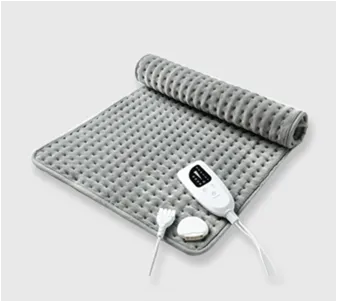
Ліст . 24, 2024 23:54 Back to list
heated blanket electricity cost
Understanding the Electricity Cost of Heated Blankets
As winter approaches and temperatures plummet, heated blankets become an increasingly popular choice for staying warm and cozy. However, many people wonder about the electricity cost associated with using these blankets. In this article, we’ll explore how heated blankets work, what factors influence their electricity costs, and tips for managing these expenses.
How Heated Blankets Work
Heated blankets are designed with electric heating elements woven into the fabric. These elements generate heat when electricity flows through them. Most heated blankets come with adjustable settings, allowing users to control the temperature according to their preferences. On average, a typical heated blanket consumes around 60 to 100 watts. However, this can vary based on the brand, size, and heating mechanism used.
Calculating the Cost
To understand the electricity cost of running a heated blanket, you can use a simple formula
1. Identify the wattage of the blanket (let’s assume it’s 75 watts). 2. Determine the number of hours you use it per day (for example, 8 hours). 3. Convert watts to kilowatts by dividing by 1,000 (75 watts = 0.075 kW). 4. Calculate daily energy consumption Multiply the kilowatts by the hours used (0.075 kW * 8 hours = 0.6 kWh). 5. Find your electricity rate (for instance, $0.12 per kWh). 6. Calculate the daily cost Multiply the daily energy consumption by the electricity rate (0.6 kWh * $0.12 = $0.072).
Using this method, running a 75-watt heated blanket for 8 hours costs about 7.2 cents per day. Over the course of a month, that accumulates to approximately $2.16. Not too expensive when you consider the comfort it provides!
Factors Influencing Cost
Several factors can influence the overall electricity cost of using a heated blanket
heated blanket electricity cost

1. Wattage Higher wattage blankets will naturally consume more electricity, so it’s advisable to choose one that meets your heating needs without excess. 2. Usage Time The longer you use the blanket, the more it costs. Consider setting a timer or using it only during the coldest periods of the night.
3. Heat Settings Many blankets have different heat settings. Using a lower setting can reduce costs while still providing adequate warmth.
4. Insulation If your home is well-insulated, it can help maintain warmth, allowing you to use the blanket for shorter periods, thus saving on electricity costs.
Tips for Reducing Costs
1. Use a Timer Some blankets come with timers that allow them to turn off automatically after a set time, preventing unnecessary usage.
2. Layering Combine your heated blanket with other layers like throws or comforters to stay warm without relying entirely on electric heat.
3. Use It Strategically Only use the blanket when you’re ready to sleep, rather than leaving it on throughout the night.
4. Choose Energy-Efficient Models Look for blankets with energy-efficient designs or safety features like automatic shut-off to limit usage.
Conclusion
In conclusion, heated blankets can offer a cost-effective way to stay warm during cold months, with relatively low electricity costs on average. By understanding the factors that influence these costs and employing a few strategies to minimize usage, you can enjoy the comfort of a heated blanket without breaking the bank. As always, it’s essential to monitor your energy consumption and adjust your usage to fit both your comfort needs and budget.
-
The Rise of Heated Blankets for Dogs Outdoor
Jun.09,2025
-
Revolutionize Your Sleep with a Heated Mattress Blanket
Jun.09,2025
-
Revolutionize Your Comfort: Discover the Cordless Heated Blanket Advantage
Jun.09,2025
-
Keep Your Pets Warm and Comfortable
Jun.09,2025
-
Experience Warmth Reimagined: Discover the Power of an Electric Blanket
Jun.09,2025
-
Choosing the Best Cat Heating Pad Indoor and Out
Jun.09,2025
Realted Products



